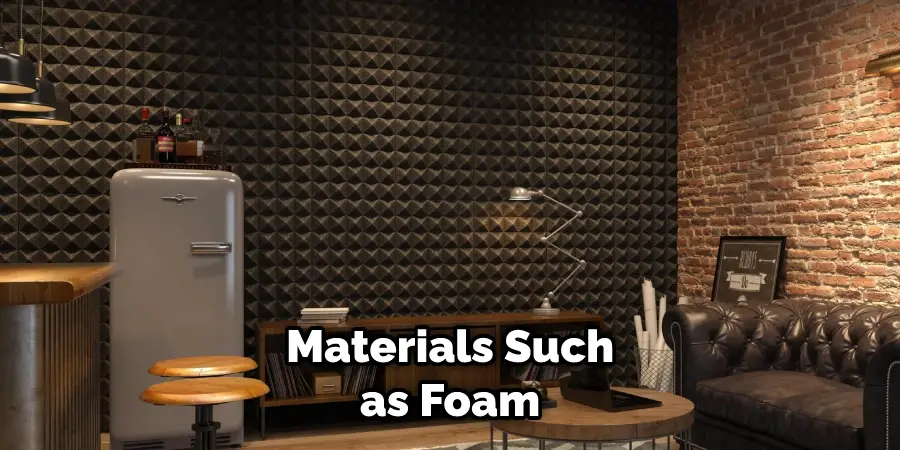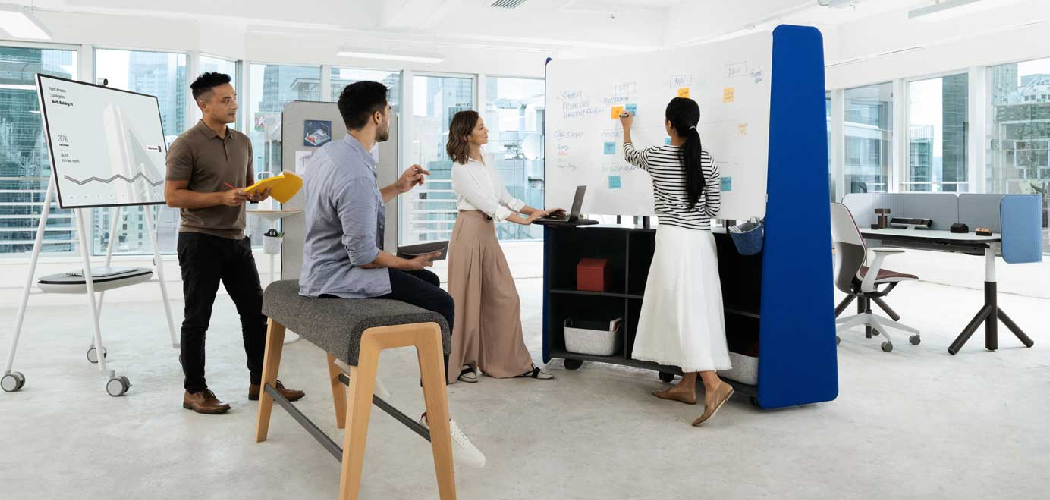Noise in the workplace can be distracting and adversely affect productivity. Not only that, but it can also negatively impact your employees’ health due to increased stress levels. Therefore, it is important to take steps to reduce noise in your office environment.

By doing so, you can create a more productive and healthy workspace for your staff. Reducing office noise not only helps to create a more productive work environment but can also improve employee morale and well-being.
By reducing the distractions that come from loud conversations and other sounds, employees will be better able to concentrate on their tasks at hand. In some cases, reducing office noise can even result in lower energy costs due to less need for air conditioning and heating.
All of these benefits add up to overall improved productivity and a healthier workplace. In this blog post, You will learn in detail how to reduce office noise.
Step-by-Step Processes for How to Reduce Office Noise
Step 1: Inspect the Office Environment

The first step to reducing office noise is to inspect the office environment and identify potential sources of sound. Look for gaps in walls, windows, and doorways that could be allowing outside noise in or permitting sound to escape inside.
Step 2: Investigate Acoustic Treatments
Before making any changes, acoustic research treatments such as insulation panels and sound-absorbing materials, which can help reduce reverberation in the office. After assessing all potential acoustic treatments, install the necessary products in your office. Be sure to follow any manufacturer instructions carefully and adhere to safety precautions.
Step 3: Utilize Soundproofing Materials
Invest in soundproofing materials such as curtains, carpets, and rugs. These will help absorb some of the noise inside the office and add a decorative touch. If possible, install acoustic barriers around noisy areas or machines. These can effectively block out much of the outside noise from entering the office.
Step 4: Utilize Sound-Reducing Furniture and Fixtures
Invest in furniture and fixtures that are designed to reduce sound reverberation. Desk dividers, upholstered chairs, and other sound-muffling furniture will help reduce overall noise levels in the office. Encourage employees to use noise-reduction strategies such as using headphones while working or talking in quieter areas.
Step 5: Limit Unnecessary Office Equipment Use

If possible, limit the use of unnecessary office equipment that may be producing excess noise. This includes printers, copiers, and other electronic devices that can be distracting. Invest in technology such as noise-canceling headphones or soundproofing apps that help limit the sound produced by conversations and other noises in the office.
Step 6: Educate Employees on Best Practices for Reducing Noise
Finally, educate your employees on best practices for reducing noise in the office. Encourage them to take breaks away from their desk when needed, use headphones while working, and be mindful of their voices when talking in the office.
These steps can help you effectively reduce office noise levels. Following these guidelines and implementing noise-reducing strategies can create a quieter and more productive workspace.
Tips for How to Reduce Office Noise
- Make sure to maintain a reasonable distance between your workstation and other noise sources, like printers or other noisy equipment, to minimize sound pollution.
- Utilize products such as acoustic foams, desk dividers, and sound-absorbing materials on walls and furniture to reduce the reverberation of sound waves in the workspace.
- Encourage the use of headphones when listening to music or attending virtual meetings, as this minimizes noise levels in the office environment.
- Invest in soundproofing solutions such as acoustic curtains and partitions to further reduce noise from outside sources such as traffic and construction work.
- Establish clear policies and guidelines on noise levels in the office and educate staff on how to behave responsibly when it comes to sound.
- Establish a quiet zone or designated areas where employees may work without interruption from outside noise sources. This can also be helpful for employees who are sensitive to sound or need special accommodations due to disabilities.
By providing silence and peace of mind, these tips can help create a more productive and enjoyable workplace.
What Types of Noise Are the Most Disruptive in an Office Setting?

- One of the most disruptive types of noise in an office setting is chatter between employees. This can be especially distracting when it’s loud and happens close to other workers who are trying to concentrate on their tasks.
- Another type of noise that can be disruptive in a shared workspace is background music or television playing, either from a radio or other sources.
- Additionally, typing on keyboards and tapping of pens are common noises that can be disruptive in an office setting.
- Clanging metal objects dropped items, and slammed doors can also create noise that may be distracting to people trying to focus on their tasks.
- Finally, the sound of phones ringing and people talking on them can also be intrusive in an office environment.
By reducing these common noise sources, employees will be able to focus better on their tasks and increase productivity in the workplace. To reduce the disruptive noise in your office, you can take a few steps.
How Can Office Furniture Be Used to Block Sound From Traveling Through Walls and Floors?
One of the most effective ways to reduce office noise is through the use of office furniture. Strategically placing furniture around the workspace, it can help to block sound from traveling through walls and floors, reducing overall noise levels.
For instance, large bookcases or shelves can be used to absorb sound and prevent intrusive noises from entering other rooms. Similarly, desks and cubicles can be placed strategically around the office to create a sound barrier between different workspaces.
Additionally, sound-absorbing materials such as thick carpets or upholstered walls can also help to reduce noise in an office environment. These materials can absorb the sound waves produced by voices and other noises, resulting in a quieter workspace.
Overall, using office furniture and sound-absorbing materials can be an effective way to reduce noise levels in a busy office environment.
By strategically placing furniture around the workspace and utilizing sound-absorbing materials, it is possible to create a quieter atmosphere where employees can focus on their work without being disturbed by outside noises.
Are Any Soundproofing Solutions Portable Enough to Move Around the Office Space as Needed?
The answer to this question is yes. There are a variety of portable solutions that can help reduce office noise, such as acoustic panels and sound-dampening curtains.

These products can be easily moved around the office space when needed and placed in areas where extra noise reduction is needed. The panels absorb sound waves, while the curtains create an extra layer of soundproofing.
If you are looking for a more permanent solution, acoustic tiles can be installed to the walls and ceiling to provide additional noise reduction.
No matter what type of portable solution you choose, it’s important to take into account where in the office space it will have the most impact.
For example, if you want to reduce sound coming from a conference room, you may want to place the panels at the room’s entrance or on any walls near the main noise source.
Finally, it’s important to remember that while some portable solutions may provide temporary relief from office noise, they are not long-term solutions to reducing noise in the workplace.
If your office is consistently experiencing too much noise, it’s best to invest in permanent soundproofing solutions that will provide a more complete and lasting reduction of noise levels.
Is There Acoustic Foam That Can Be Used to Improve Sound Quality in an Office Environment?
When it comes to reducing office noise, acoustic foam is one of the most effective solutions. Acoustic foam is a sound-dampening material that absorbs noise and prevents it from echoing around a room.
It also helps reduce reverberation, which can make conversations difficult to understand. By installing acoustic foam in your office space, you can significantly improve the overall sound quality and reduce the amount of ambient noise.
The first step is measuring your office space and determining how much acoustic foam you need. Once you know the size, you can purchase pre-cut foam panels or sheets that are easy to install.
You may want to hire a professional installer if you’re not sure how to do it yourself. When installing the acoustic foam, it’s important to place it strategically in order to reduce background noise levels. For example, you may want to put panels on your walls or ceiling – but avoid putting them directly behind speakers as this could cause feedback and distortion.
Are There Any Technology Solutions for Reducing Office Noise Levels?
Technology can play a critical role in reducing office noise levels. One way to do this is through soundproofing. Soundproofing materials such as foam, insulation, and ceiling tiles can absorb sound and help reduce the amount of noise that travels between rooms or workstations.

Additionally, sound-masking technology can be used to create a uniform background noise that will mask the sound of conversations and other noises in the office. This technology can be especially useful for open-plan offices or shared workspaces where it may be difficult to keep noise levels down.
Another way to reduce office noise is through acoustic panels which are placed around the office to absorb sound energy from different sources. Acoustic panels can be placed strategically in areas where noise levels are particularly loud, such as near printers or HVAC systems.
Finally, noise-canceling headphones can act as a personal solution to blocking out office sounds. They use active noise cancellation technology to reduce background noises and create an oasis of quiet for their users.
Conclusion
In conclusion, reducing office noise can be a challenging task, but there are several methods that organizations can use to minimize the din of the workplace effectively. By utilizing sound-absorbing materials, encouraging employees to work from home, and using noise-canceling headphones, companies can create a quieter working environment for their teams.
Organizations should also take steps to ensure that any loud activities occur at a designated time to minimize disturbances. With these tips, companies can ensure that their office remains an enjoyable and productive place to work.
I hope reading this post has helped you learn how to reduce office noise. Make sure the safety precautions are carried out in the order listed.

